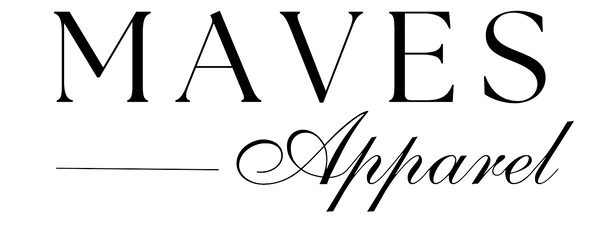
The Art of Pakistani Embroidery: A Guide to the Rich and Vibrant Tradition
Share
Pakistani embroidery is a centuries-old tradition that has been passed down from generation to generation. This intricate and colorful art form is a symbol of the country's cultural heritage and has been popularized all over the world. In this article, we will explore the history and different styles of Pakistani embroidery, the materials and tools used, and the significance of this art form in contemporary Pakistani society.

History of Pakistani Embroidery
Pakistani embroidery has a rich history that dates back to the ancient Indus Valley Civilization, which flourished over 5,000 years ago. Archaeological excavations have uncovered evidence of embroidery on pottery, clay figurines, and other artifacts from this period. The art form continued to evolve over the centuries, with influences from various cultures and civilizations that ruled the region.
During the Mughal era in the 16th and 17th centuries, embroidery flourished and became an important art form in the royal courts. The Mughal emperors were patrons of the arts and embroidery was no exception. The art form reached new heights during this period, with intricate designs and patterns being created by master embroiderers.
Styles of Pakistani Embroidery
Pakistani embroidery has a diverse range of styles, each with its unique designs and techniques. Some of the most popular styles include Sindhi embroidery, Balochi embroidery, Phulkari embroidery, Chikankari embroidery, Kashmiri embroidery, and Multani embroidery.
Sindhi embroidery is known for its bright and vibrant colors, and features intricate patterns of flowers, birds, and other motifs. Balochi embroidery, on the other hand, is known for its bold and geometric designs, often featuring geometric shapes and patterns.
Phulkari embroidery, which originated in Punjab, is known for its floral designs and bright colors. Chikankari embroidery, which is popular in Uttar Pradesh, features delicate white threadwork on sheer fabrics such as muslin and organza. Kashmiri embroidery, which is known for its intricate designs and patterns, is often done on woolen shawls and other winter garments. Multani embroidery is a mix of various embroidery styles and is known for its bold and colorful patterns

Materials and Tools Used in Pakistani Embroidery
Pakistani embroidery uses a variety of materials and tools. The type of fabric used depends on the embroidery style, with some styles using cotton, silk, or woolen fabrics. The thread used in Pakistani embroidery is usually made of cotton or silk and comes in a wide range of colors.
Embroidery needles and frames are also important tools in Pakistani embroidery. The needles used for embroidery are finer than regular sewing needles and come in different sizes for different types of stitching. Embroidery frames are used to hold the fabric taut while stitching, ensuring even stitches and preventing the fabric from puckering.
Other tools used in Pakistani embroidery include scissors, pins, and tracing paper. Tracing paper is used to transfer the embroidery design onto the fabric.
Techniques of Pakistani Embroidery
Pakistani embroidery uses a range of stitching techniques, with some styles using more advanced techniques than others. Basic stitches used in embroidery include running stitch, backstitch, chain stitch, satin stitch, and French knots.
Advanced techniques used by master embroiderers include zardozi, which involves the use of metallic thread and embellishments such as sequins and beads. Another advanced technique is aari work, which involves using a hook-shaped needle to create fine and intricate designs.
Embroidery patterns and designs vary depending on the style of embroidery. Some styles feature geometric designs, while others feature floral patterns or motifs inspired by nature.
Significance of Pakistani Embroidery in Contemporary Society
Pakistani embroidery plays an important role in the country's fashion industry. Embroidery is often used to embellish clothing such as shalwar kameez, sarees, and dupattas. Embroidery is also used to create decorative items such as tablecloths, cushion covers, and wall hangings.
In addition to its role in the fashion industry, embroidery also holds social and cultural significance in Pakistani society. Embroidery is often passed down from generation to generation, with mothers teaching their daughters the art form. Embroidery is also used to mark special occasions such as weddings and religious festivals.
Efforts are being made to preserve the tradition of Pakistani embroidery. Embroidery workshops and training programs are being held to teach the art form to a new generation of embroiderers. This ensures that the tradition is kept alive and that future generations can continue to enjoy the beauty and richness of Pakistani embroidery.

Conclusion
Pakistani embroidery is a beautiful and intricate art form that has been passed down from generation to generation. The tradition has evolved over time, with different styles of embroidery emerging in different regions of the country. Embroidery is not only an important part of the country's fashion industry but also holds social and cultural significance in Pakistani society. It is important to preserve this tradition so that future generations can continue to appreciate the beauty and richness of Pakistani embroidery.
FAQs
Q1: What is the origin of Pakistani embroidery?
Ans: Pakistani embroidery has its origins in the ancient Indus Valley Civilization, which dates back over 5,000 years.
Q2: What are the different styles of Pakistani embroidery?
Ans: Some of the different styles of Pakistani embroidery include Sindhi embroidery, Balochi embroidery, Phulkari embroidery, Chikankari embroidery, Kashmiri embroidery, and Multani embroidery.
Q3: What materials are used in Pakistani embroidery?
Ans: Pakistani embroidery uses a variety of materials, including cotton, silk, and woolen fabrics, as well as cotton or silk thread.
Q4: What techniques are used in Pakistani embroidery?
Ans: Pakistani embroidery uses a range of stitching techniques, including running stitch, backstitch, chain stitch, satin stitch, French knots, zardozi, and aari work.

